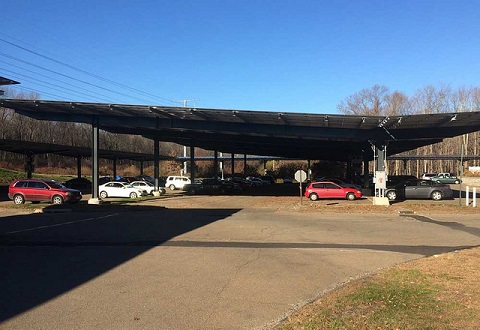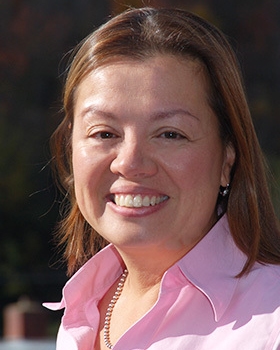Expanding Access to Solar Financing in Connecticut
 With the CT Solar Lease (SL2) program, the Connecticut Green Bank (Green Bank) continues to develop innovative financing solutions to advance solar and other clean energy technologies. The CT SL2 program builds on the success of the original CT Solar Lease program, the nation’s first residential PV financing program to combine ratepayer funds with private capital to leverage federal incentives. By expanding the Solar Lease program to include commercial and nonprofit projects that have traditionally been excluded from the solar financing market (along with serving more customary municipal credits), SlL2 has further opened the door to distributed solar by pairing Connecticut’s Commercial Property Assessed Clean Energy (C-PACE) financing mechanism with power purchase agreements (PPAs). The result has enabled the Green Bank to once again leverage ratepayer funds with significant private capital, in a scalable and replicable manner, in order to finance and deploy solar projects for “mid-market” commercial and nonprofit organizations that otherwise would not be able to make these projects happen.
With the CT Solar Lease (SL2) program, the Connecticut Green Bank (Green Bank) continues to develop innovative financing solutions to advance solar and other clean energy technologies. The CT SL2 program builds on the success of the original CT Solar Lease program, the nation’s first residential PV financing program to combine ratepayer funds with private capital to leverage federal incentives. By expanding the Solar Lease program to include commercial and nonprofit projects that have traditionally been excluded from the solar financing market (along with serving more customary municipal credits), SlL2 has further opened the door to distributed solar by pairing Connecticut’s Commercial Property Assessed Clean Energy (C-PACE) financing mechanism with power purchase agreements (PPAs). The result has enabled the Green Bank to once again leverage ratepayer funds with significant private capital, in a scalable and replicable manner, in order to finance and deploy solar projects for “mid-market” commercial and nonprofit organizations that otherwise would not be able to make these projects happen.
Opening up a New Market Segment for Solar Finance
The principal financial barriers that prevent nonprofits from going solar include the lack of both a) upfront capital and b) tax equity appetite to monetize federal tax credits. The SL2 program uses the well-established solar tax equity fund model to provide low-cost, long-term power PPAs and leases to Connecticut nonprofit customers as well as municipalities and commercial customers. Within this widely adopted framework, however, what is unique about this fund is that the Green Bank received approval from both tax equity and debt investors to finance otherwise non-creditworthy projects by using C-PACE as a credit enhancement tool to secure customer PPAs. PPAs for nonprofits under this program enjoy an improved credit profile thanks to a C-PACE benefit assessment lien on each property, providing confidence to private investors that each PPA will be repaid. Through the use of the PACE + PPA structure under the SL2 program, solar adoption becomes viable for an entire class of customers who previously had no way to finance their projects.
Establishing a New Investment Model for Nonprofits
As the first nonprofit to utilize the SL2 program, the Jewish Community Center of Greater New Haven (JCC) has paved the way for other nonprofit organizations to go solar. The JCC project involved the installation of 755 kW of solar panels over three carports in their parking lot to provide a cleaner, cheaper, and more reliable source of energy. Using the Green Bank’s C-PACE-secured PPA structure, the project required no money down from the JCC and provided immediate cost savings when completed. The build cost for the JCC Solar Canopy Project’s was $3.12/W (or approximately $2.35 million in total), and the project benefited from a utility “ZREC” contract (a fixed-price, 15-year REC offtake contract) as well, offering $94.95 per megawatt-hour generated by the solar. All in, then, the JCC is now paying a discounted rate for electricity under a 20-year PPA, with a starting price of $0.102/ kWh (escalating at 1.5% annually), leading to an effective monthly rate of $7,568.00 (or nearly $5 million in lifetime project revenues and tax benefits realized for the Green Bank and its investors). The JCC is also expected to save more than $20,000 on its electricity bills every year. The JCC project represents the first nonprofit in the country to successfully utilize a PACE + PPA approach to financing a solar project.
Lessons Learned
While third-party ownership structures are not new to the solar market, the unique financing structure of securing a PPA via a C-PACE benefit assessment lien made the JCC Solar Canopy project financing possible for a nonprofit organization. From the investor point of view, PACE PPA payments are a senior benefit assessment lien on the property, and in the event of a default, the remedies are much stronger compared to a typical PPA. There were a number of achievements in leadership and innovation in creating this program. The first was getting the SL2 program’s investors comfortable with the C-PACE mechanism as a means to securing investments into traditionally non-investment grade credits. The second was establishing the initial set of documentation (available upon request) to fully capture the entire financing structure. Finally, the Green Bank had to create an outreach and marketing strategy to onboard local solar developers who could not only understand and deliver the financing offering to customers, but also generate growth for the program to help it achieve scale. Some of these challenges, and the Green Bank’s approach to overcoming them, are further discussed here: http://www.pacenation.us/pace-talk-pace-power-purchase-agreements-ppa-is-a-game-changer-for-connecticut-and-beyond.
The JCC project and the SL2 program under which it was financed can be replicated across the country, particularly in states with PACE programs that are already established or are currently in development. In fact, significant market participants are now looking to do just that: http://www.pacenation.us/pace-talk-renew-financial-solar-city.
Program Highlights
- The CT Green Bank’s Solar Lease 2 program offers a new financing tool for commercial customers, municipalities and nonprofit organizations to go solar.
- By securing solar PPAs with C-PACE benefit assessment liens, private investors have confidence that the PPAs will be repaid.
- Under the Solar Lease 2 program, multiple megawatts of solar have already been deployed across 15 nonprofit projects in Connecticut, with no money down and PPA prices offered at less than the customer’s traditional electricity rate.
The Connecticut Green Bank’s Solar Lease 2 program was a recipient of a 2016 “State Leadership in Clean Energy Award,” presented by the Clean Energy States Alliance (CESA).
CESA hosted a webinar highlighting the Connecticut Green Bank’s Solar Lease 2 program on July 19, 2018.
This blog was also published in Renewable Energy World.
Published On
July 14, 2016

